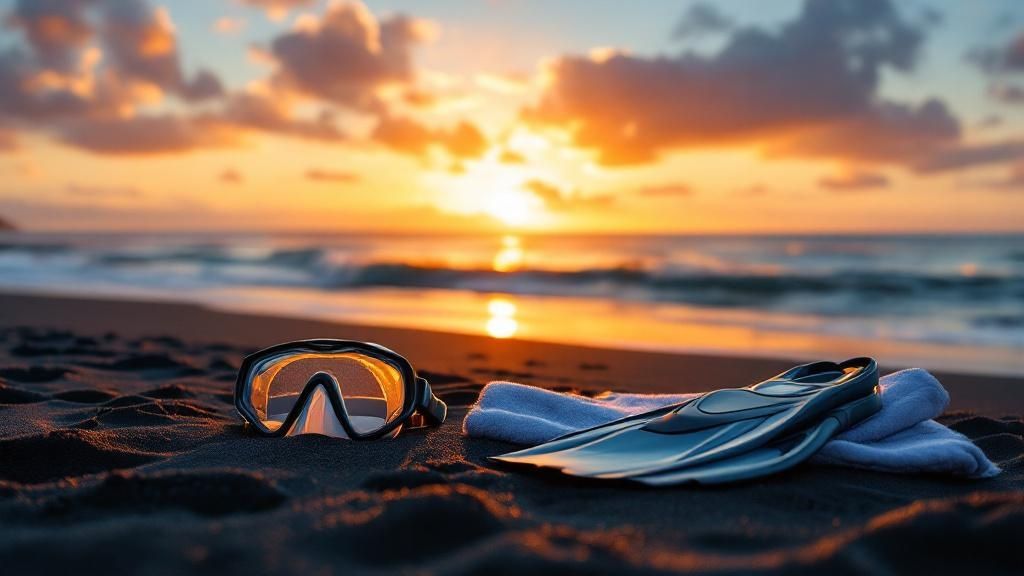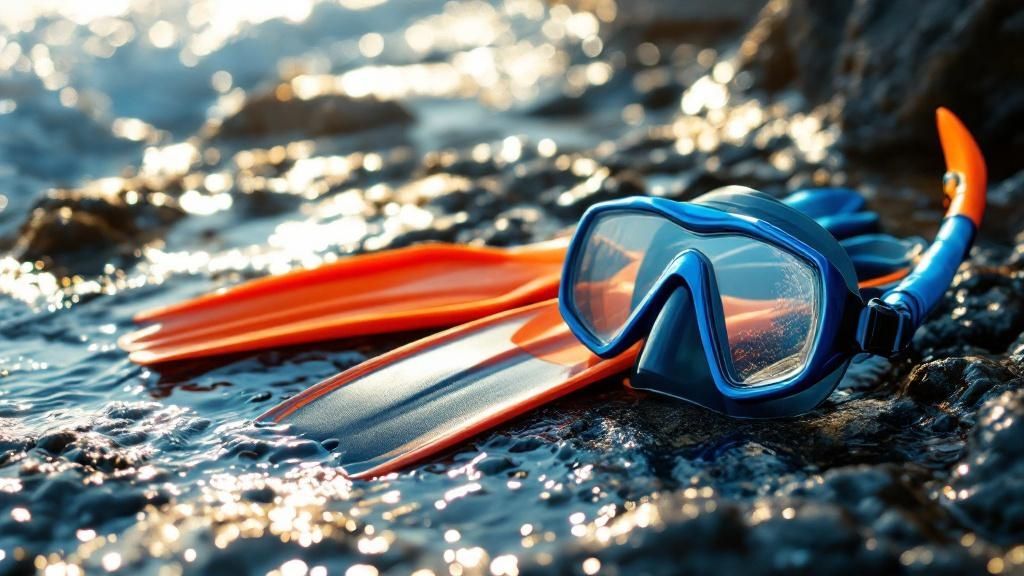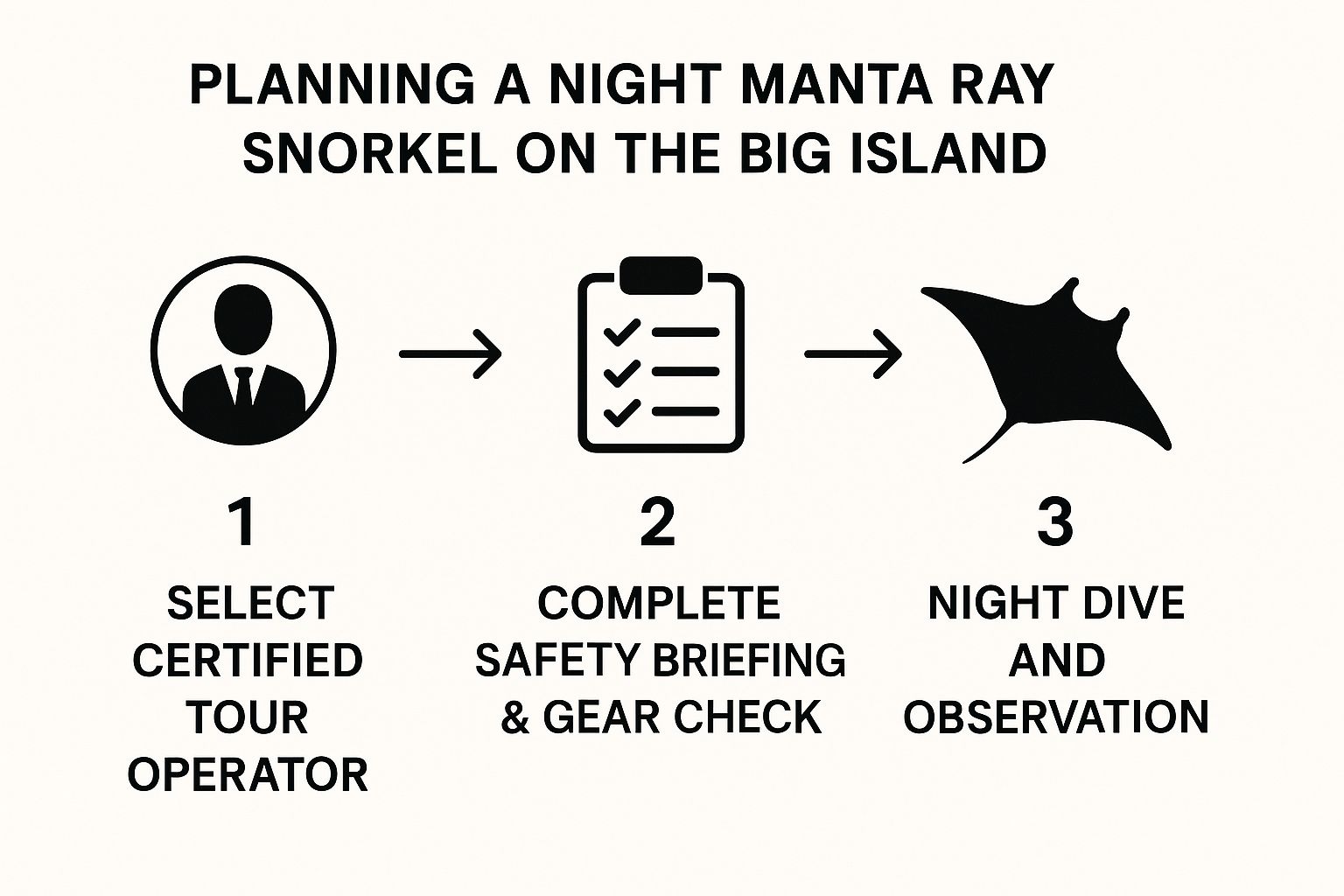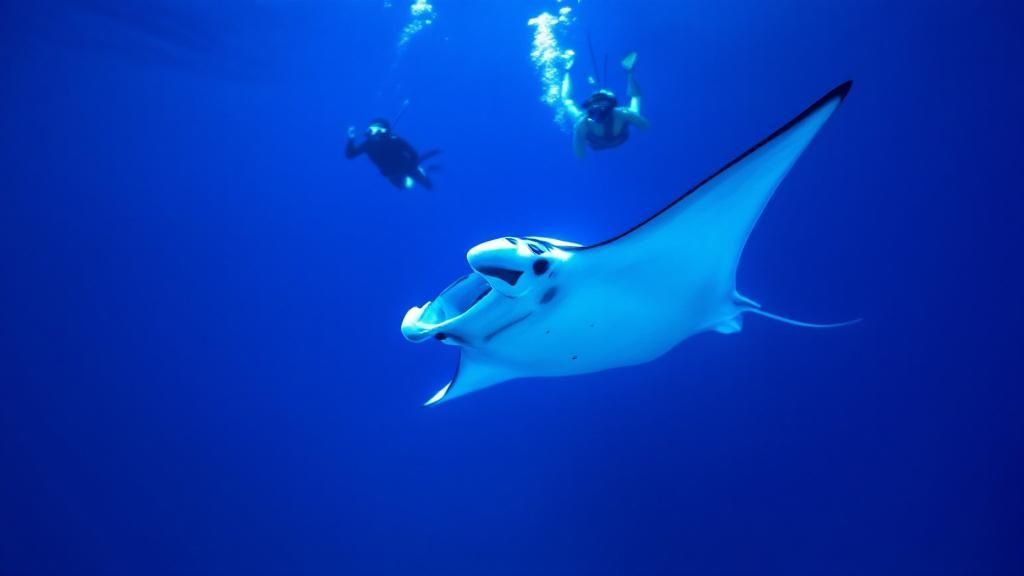Your Guide to Manta Ray Snorkel Big Island Tours
- Byron
- Jul 19
- 11 min read
Picture this: you’re floating in the calm, dark Hawaiian ocean. Suddenly, an enormous, graceful shadow glides silently beneath you. It’s a giant manta ray, with a wingspan that can stretch over 12 feet, dancing in the glow of underwater lights. This isn't just another tour; it's a world-famous wildlife encounter, and a manta ray snorkel on the Big Island is hands-down the best place on the planet to experience it.
Your Unforgettable Night with Gentle Giants

The Kona coast of Hawai‘i offers a truly magical adventure that consistently lands on lists of the world's top marine experiences. What really sets it apart is the incredible reliability—tour operators here report sighting success rates that often soar above 90%. This guide is your complete playbook for planning this absolute bucket-list trip.
Don't just take our word for it. See what fellow snorkelers are saying after joining a trip with Manta Ray Night Snorkel Hawaii.
What Makes This Experience So Unique?
Unlike a lot of wildlife encounters, the manta ray night snorkel is unbelievably accessible. You don't need any scuba certifications to get a front-row seat to the show. On most tours, you'll simply hold onto a custom-built flotation board that’s rigged with powerful, bright lights.
These lights are the key to the whole operation. Here’s how they work their magic:
They cut through the darkness, turning the water into a brilliantly lit underwater stage.
They attract massive clouds of plankton, which happens to be the manta rays' favorite meal.
The plankton, in turn, draws in these gentle giants for their nightly feast.
This simple setup creates an incredible spectacle where the mantas perform amazing acrobatics, swooping and barrel-rolling just inches below you as they feed. It’s an immersive, completely safe, and deeply moving experience.
The feeling of watching a massive fish the shape of a stealth bomber coming into vision is impossible to describe. It’s a truly awesome feeling.
Preparing for Your Adventure
The journey begins long before you step foot on the boat. Picking the right tour is crucial for ensuring your outing is safe, respectful to the animals, and totally unforgettable. This guide will walk you through how to select a responsible operator, what to pack, what to expect during the trip, and all the insider tips to make every moment count.
Get ready for an experience you'll be talking about for years to come.
Why the Big Island Is the World's Manta Ray Capital
When you hear people call the Kona coast the "manta ray capital of the world," they aren't just using a catchy phrase. It's the honest truth. The Big Island has a unique combination of geography and a reliable food source that makes it the absolute best place on the planet to see these gentle giants up close. This is exactly why the manta ray snorkel Big Island experience is in a league of its own.
The secret ingredient is the island's underwater volcanic landscape. Those submerged slopes create the perfect conditions for plankton—the manta rays' favorite meal—to flourish. Add in some consistent ocean currents, and you've got a "manta buffet" that stays open all year long. This natural setup has turned specific locations into dependable nightly feeding grounds for the local manta population, making encounters incredibly likely.
The Science Behind the Spectacle
Two spots, in particular, have become legendary for manta sightings: Manta Village, just south of Kailua-Kona, and Manta Heaven, a bit to the north. These aren't just clever marketing names; they are scientifically recognized spots where mantas reliably gather to feed every single night.
And we're not just going on good stories. The Kona Coast has a staggering 80-90% sighting success rate, a number backed by years of careful observation. This incredible consistency brings in about 80,000 visitors every year, all hoping to see the famous underwater ballet for themselves. Because the plankton supply is constant, you have an exceptionally high chance of an amazing encounter any night you go out.
Manta rays have the largest brain-to-body size ratio of any fish, a clue to their incredible intelligence. You can see it in their complex social behaviors and their curious, gentle interactions with snorkelers.
A Thriving Population and Cultural Significance
The connection between Hawai‘i and manta rays, known as hāhālua, is ancient. These creatures are even mentioned in the Kumulipo, the sacred Hawaiian creation chant, which shows just how long they've been a revered part of the culture and ecosystem. They’re far more than just a tourist draw.
What’s truly special is that Kona’s manta ray population is a thriving, non-migratory community. Researchers have actually identified and named over 450 individual reef mantas in these waters. Each one has a unique spot pattern on its belly, like a fingerprint.
This means when you go on a tour, you could be meeting a local celebrity like "Lefty" or "Big Bertha." This personal connection makes the adventure so much more meaningful. It’s not just a snorkel trip; it's a genuine wildlife encounter.
If you're getting ready for your trip, our ultimate guide to a manta ray snorkel on the Big Island has even more inside tips to make sure your experience is one you'll never forget.
How to Choose the Right Manta Ray Snorkel Tour

When you start looking for a manta ray snorkel Big Island tour, it's easy to feel a little lost. So many companies, so many options. Let's cut through the noise and talk about what really matters for an incredible experience out on the water.
Not all tours are the same. The biggest differences you'll find are the boat, how many people are on it, and how seriously the company takes the well-being of the mantas. It really comes down to finding an operator that fits your style and values. To get a closer look at specific companies, check out this guide on the best manta ray snorkel Big Island tours for a detailed breakdown.
Boat Size and Group Intimacy
One of the first decisions you'll make is about the boat itself. Are you looking for a small, personal adventure or a larger, more stable vessel?
Smaller Boats (like Zodiacs): These trips feel more intimate and personal. With fewer people, you'll get more one-on-one time with the guides. The ride itself can be faster and more thrilling, which is a big plus for adventure-seekers.
Larger Boats: These are your go-to for stability. If you're worried about seasickness, a larger boat is a fantastic choice. You'll have more room to spread out, and they often come with more amenities.
Honestly, there's no wrong choice here—it’s all about what you prefer. A smaller boat feels like a private charter, while a bigger one offers more comfort, especially for families or anyone a bit nervous about swimming at night.
Responsible tourism is everything. The best operators put the mantas' safety first, sticking to strict guidelines to ensure you're just a passive observer, letting the mantas do their thing without interruption.
Safety and Eco-Friendly Practices
This is, without a doubt, the most important thing to look for. The future of Kona's amazing manta ray population relies on us being responsible visitors. You want to find operators who are open and proud of their eco-friendly approach. Reputable companies are all about creating a safe and respectful encounter for both you and the mantas.
Here are a few green flags that tell you you've found a great company:
Manta-Safe Briefings: The crew should give everyone a detailed safety and educational talk before you even get in the water. They'll explain exactly how to float passively and why you should never touch, chase, or dive down toward the mantas.
Certified Guides: Look for tours with lifeguard-certified guides. These are the pros who know how to keep everyone safe and comfortable in the water after dark.
"Manta Ray Green List" Standards: While the official list isn't active anymore, the best operators still follow its strict rules for manta-safe tourism. When you choose one of these companies, you're helping protect the very animals you came all this way to see.
By picking an operator that puts the mantas first, you’re doing more than just booking a tour. You're becoming part of the solution and helping conserve this incredible marine ecosystem for years to come.
What to Expect on Your Manta Snorkel Adventure
The real excitement kicks in the moment you check in for your manta ray snorkel Big Island tour. As your boat cruises out of the harbor, you get these incredible, sweeping views of the Kona coastline, all bathed in the warm glow of sunset. It’s more than just a boat ride; it’s the perfect, peaceful start to an unforgettable night.
Once you’re at the snorkel site, the crew runs through a solid safety briefing. This isn't just a quick "don't do this" speech. They make sure everyone, from total beginners to old pros, feels completely comfortable and ready. They’ll cover the rules for interacting respectfully with the mantas, and the most important one is simple: no touching. This rule is there to protect the mantas' delicate mucous coating, which is crucial for keeping them healthy.
The Floating Light Board Experience
The main event of the in-water experience revolves around a custom-built light board. This isn't just some raft with a light strapped to it. It’s a specially designed floating platform with powerful lights aimed straight down into the dark ocean. You’ll hang onto handles along the sides, allowing you to float effortlessly on the surface without having to swim.
This clever design does two things at once:
It gives you a stable, secure spot to hold onto, so you can just relax.
The bright lights attract swarms of plankton—the mantas' favorite meal.
By drawing the plankton right up to the surface, the light board essentially sets up a floating dinner table. This is what brings the manta rays in for their amazing nightly feeding, giving you a front-row seat to the magic.

The key takeaway here is that a safe, respectful, and mind-blowing manta encounter all starts with picking a certified operator that puts safety and education first.
Witnessing the Underwater Ballet
As you float there, watching the plankton cloud up in the light, the first dark shadow emerges from the depths. It’s a truly breathtaking moment when a giant manta ray, with a wingspan that can stretch over 12 feet, glides gracefully into the light.
The Kona manta ray population is estimated to have more than 450 unique individuals, making it one of the most reliable viewing spots on the planet. The local conditions—shallow depths and clear water—are perfect for watching them perform their famous underwater ballet, doing barrel rolls sometimes just inches below you.
The feeling of being so close to these majestic creatures is hard to describe. It's a powerful mix of awe, wonder, and a deep connection to the natural world.
The water is usually quite calm and warm, but the experience is anything but ordinary. All you'll hear are the gentle sounds of the ocean and the quiet, amazed gasps from your fellow snorkelers as the mantas swoop and feed. You're not just watching wildlife; you're a silent guest at their incredible dinner party. To get a better sense of the whole adventure from start to finish, check out our complete journey guide for a manta ray snorkel on the Big Island.
Insider Tips for a Perfect Night Snorkel

You've booked your tour, and the countdown has officially begun! Now it's time to talk about the little details that take a great manta ray snorkel Big Island experience and make it absolutely perfect. These are the insider tips that we, as experienced guides, share with our guests to make sure they’re comfortable, prepared, and ready to be completely mesmerized.
A little prep before you even head to the harbor can make all the difference. If you're someone who gets motion sickness, it's a smart move to take your preferred remedy before you get on the boat. The Kona coast is usually pretty calm, but a little prevention ensures you won't miss a single magical moment.
Staying Comfortable in the Water
The water here in Hawaii is beautiful and warm, typically hovering between 75-80°F (24-27°C). That said, it can feel surprisingly chilly once the sun goes down and you're in the water for a while.
Most tours, including ours, provide wetsuit tops, and you should definitely take one. That extra layer is the key to staying comfortable for the 30-45 minutes you'll be floating, allowing you to focus completely on the incredible ballet happening below you.
Here are a few other small things that have a big impact:
Post-Snorkel Warmth: Always bring a dry towel and a light jacket or sweater for the boat ride back to the harbor. You’ll be surprised how cool the night air feels when you're wet.
Hydration: Drink plenty of water throughout the day before your tour. Staying properly hydrated helps your body regulate its temperature, both in and out of the water.
The single most important tip we can give? Relax. Let go, float, and just be a passive observer. The calmer and quieter you are on the surface, the more comfortable the mantas will feel. This stillness is what creates the safest and most breathtaking encounters as they glide just inches beneath you.
Capturing the Moment and Understanding the Science
Bringing an underwater camera is a fantastic idea, but shooting at night in the ocean comes with its own set of challenges. For the best results, use a camera that has a red light filter. Red light is far less disruptive to the mantas' natural feeding behavior, so you can capture those stunning images without disturbing the show.
What's really incredible is that you’re not just seeing random animals. You’re observing a unique, non-migratory population of manta rays. Each one has a distinct pattern of spots on its belly that acts like a fingerprint. Researchers use these spot patterns to identify, name, and track individual mantas throughout their lives.
In fact, extensive monitoring of our Kona mantas between 2009 and 2014 provided amazing data on their habits, confirming the Kona coast as a global hotspot for these gentle giants. This scientific backdrop adds a whole other layer to your snorkel. You aren’t just seeing a manta ray; you might be meeting a local celebrity like "Big Bertha" or "Lefty," who have been seen here for years!
For more ideas on making your trip seamless, check out our other adventure tips for your manta ray snorkel on the Big Island. When you choose a responsible and passionate operator, you become part of a sustainable and truly unforgettable educational experience.
Your Manta Ray Snorkel Questions Answered
Even with all the planning in the world, it's totally normal to have a few last-minute questions. When you're getting ready for something as incredible as a manta ray snorkel on the Big Island, you want to feel completely at ease. Let's tackle some of the most common things people ask, so you can show up feeling like a pro.
Here at Manta Ray Night Snorkel Hawaii, we hear these questions all the time from our guests. Seeing their excitement turn into glowing reviews is what we live for!
Is the Manta Ray Snorkel Safe for Beginners?
Absolutely! This experience is designed for just about everyone, whether you're a seasoned snorkeler or have never put on a mask before. You really don't need to be a strong swimmer.
Your main job is to float peacefully on the surface while holding onto a custom light board. The tour crews provide all the flotation gear, and the lifeguard-certified guides give a detailed safety briefing before anyone gets in the water. Their entire focus is making sure you feel safe and comfortable the whole time.
Are We Guaranteed to See Manta Rays?
Because manta rays are wild animals in their natural habitat, no one can ever offer a 100% guarantee. However, the Kona coast is world-famous for being one of the most reliable viewing spots on the planet. Sighting success rates are consistently over 90%, so your odds are fantastic.
A key sign of a responsible tour operator is that they'll be honest about this. They won't promise a sighting, but most have a great backup plan: if the mantas don't show, you can usually come back another night for free.
This is a great reason to book your tour early in your vacation. That way, if you happen to be in that unlucky 10%, you have plenty of other nights to try again.
What Is the Water Temperature Like?
The ocean here in Kona stays wonderfully warm all year, usually between 75-80°F (24-27°C). It's beautiful, but once the sun goes down and you've been floating for a bit, it can start to feel a little chilly.
That's why most quality tours provide wetsuit tops. This little bit of extra insulation makes a world of difference, keeping you warm and cozy for the entire 30-45 minute snorkel. It allows you to forget about the temperature and just focus on the incredible show below.
Wondering what else makes this experience so special? We get into all the details in our post about why the manta ray snorkel on the Big Island is an unmissable adventure.
Now that you've got the answers, you're all set for an unforgettable night with these gentle giants.
Comments